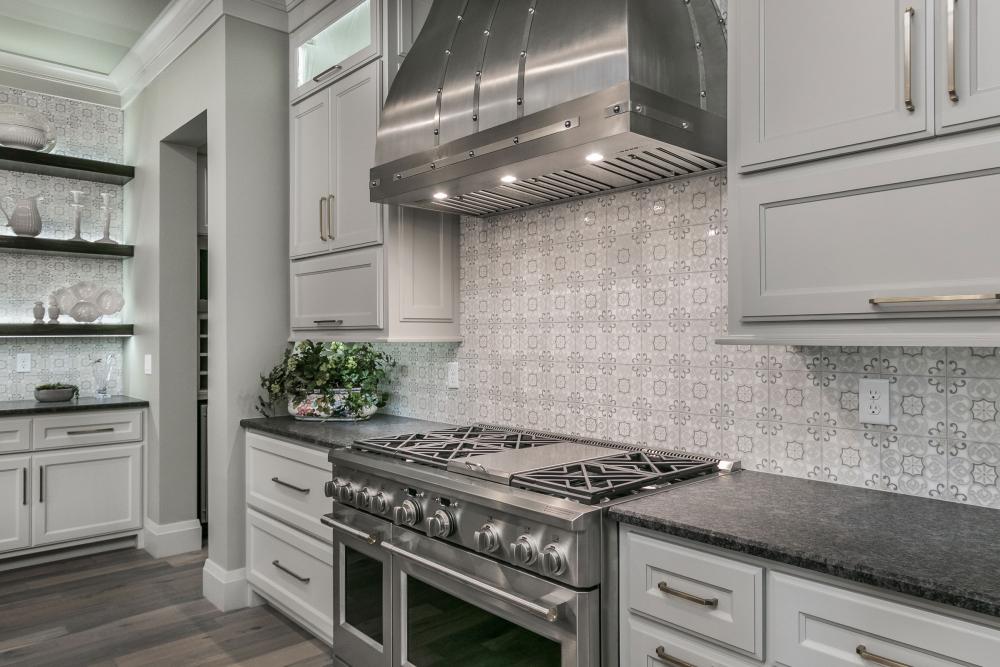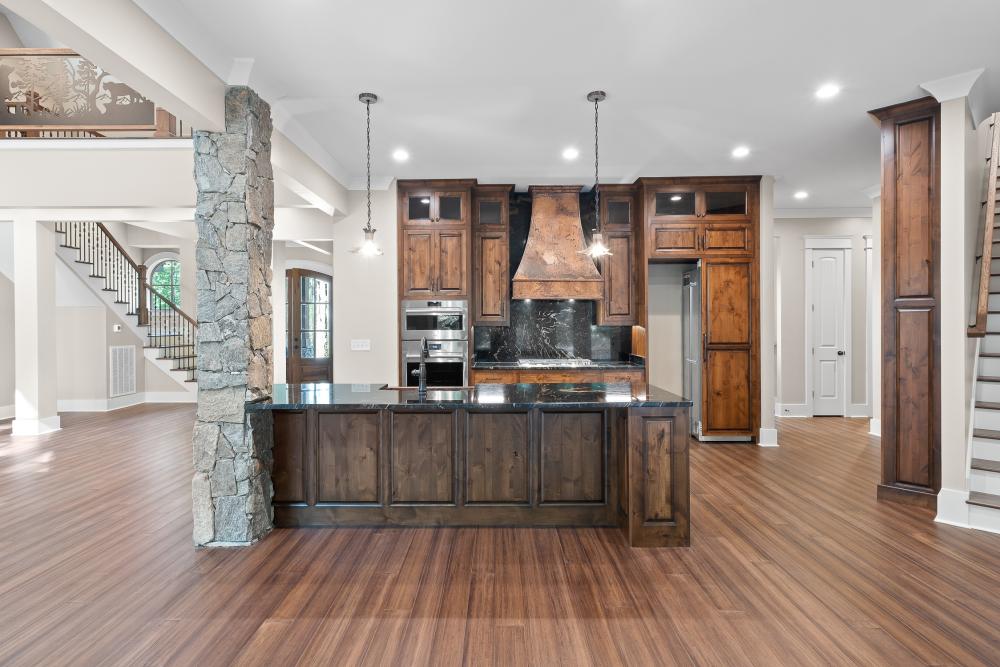Planning a kitchen remodel can feel overwhelming, but with the right approach, it can be an exciting opportunity to create the kitchen you’ve always dreamed of. Whether you're upgrading for better functionality, adding more storage, or updating to current trends, knowing where to start is key. In this guide, we'll walk you through the steps of planning a kitchen remodel.
Step 1: Gather Design Inspiration
The first step in planning a kitchen remodel is to dream big. This is your opportunity to think about everything you’ve ever wanted in a kitchen, from the layout and storage to the colors and finishes. Start by exploring different design styles and collecting inspiration from various sources.
- Create a Pinterest board filled with images that speak to you
- Take a tour of some kitchen showrooms to see the latest trends in action
- Explore both print and digital media like magazines, books, articles, and blogs
At this stage, the goal is to let your imagination run wild without worrying about the details—just focus on what excites you most about a new kitchen.

How to Create a Mood Board
Once you have a few ideas in mind, it's time to start refining your vision with a mood board.
What is a mood board? A mood board is a collage of inspirational colors, textures, patterns, and images that capture the look and feel you want for your kitchen renovation. Creating a digital mood board helps communicate your ideas to designers and contractors. Make note of features such as kitchen appliances, custom cabinets, lighting fixtures, and aesthetic choices.
How to Find Your Design Style
Finding your design style is about discovering what makes you feel at home. Start by looking at your favorite rooms or places—what do they have in common? Take note of recurring themes in your inspiration sources, like color palettes or specific materials. You might also consider taking an online kitchen style quiz or visiting design blogs for more ideas.
What Do You Naturally Gravitate Toward?
Finally, pay attention to the designs, colors, and materials you are naturally drawn to. This could be a certain color scheme, a particular material, or even a specific type of cabinet hardware. If all your inspiration photos contain copper range hoods or marble countertops, then trust your instincts, as these preferences often reflect your authentic style.
Step 2: Create a Goal for Your Kitchen Remodel
Take a moment to clarify the main reasons behind the project. Why are you considering making a change in the first place? Understanding your motivations will help guide your decisions and ensure that every aspect of the remodel aligns with your needs and goals.
- Are you looking to create a more functional space for daily cooking?
- Do you want to make your kitchen a welcoming hub for entertaining?
- Is your current kitchen outdated and in need of a style upgrade?
By clearly defining why you want to remodel and what you want from your kitchen, you set a solid foundation for a successful project. This understanding will help you stay focused, make informed decisions, and ensure that your new kitchen is perfectly tailored to your needs and lifestyle.
Step 3: Prioritize Wants & Needs
Once you've dreamed big and defined your purpose, it's time to get realistic about your remodel by distinguishing between your "wants" and "needs." This exercise helps you identify which elements are non-negotiable and which are nice-to-have.
- Start by listing everything you'd like to include in your new kitchen.
- Sort these items into two categories: essentials and extras.
When you know your priorities from the beginning, you'll be better prepared to make tough decisions down the road, especially if you need to stay within a budget or timeline.
It may be helpful to choose a few "must haves", items that you know you can't sacrifice and choose a few things that if the budget is getting tight, you can let go of without sacrificing too much. This way you are prepared and keep the kitchen design process running smoothly.

Step 4: Be Financially Prepared
Once you have a vision for your kitchen remodel, it’s crucial to consider how you plan to finance it. Knowing exactly how much you are willing and able to spend will set realistic expectations and help you avoid financial stress later. Consider the average cost of a kitchen remodel.
Start by looking at your overall budget and preparing a figure that feels comfortable for you. Consider all potential sources of funds, whether it’s your savings, a loan, or other financing options. By having a clear understanding of your financial limits upfront, you can plan your remodel with confidence and focus on making smart, strategic decisions.
Savings vs. Financing for Kitchen Remodels
Using savings can be a great option because it allows you to avoid interest payments and debt, but it’s vital to ensure that you’re not stretching yourself too thin. Make sure you’re comfortable with the amount you plan to spend, and be prepared to adjust your project’s scope if necessary to stay within those limits. If you’re not ready to finance the remodel right away, creating a savings plan might be the best option. Determine how much you need to save and set a realistic timeline for reaching your goal.
If savings aren’t enough to cover the entire cost, consider financing options. You might look into a home equity loan or line of credit, which can offer lower interest rates compared to other types of loans because your home serves as collateral. Alternatively, you could explore personal loans or special financing options offered by contractors or kitchen suppliers. Before committing to any financing plan, carefully evaluate the terms, interest rates, and repayment schedules to ensure they align with your financial goals. Understand how much you will need to pay each month and whether your budget can comfortably accommodate these payments.
Do You Have Any Flexibility with Your Budget?
Think about whether there is any flexibility in your budget. Are you willing to stretch your budget slightly if it means getting the features or finishes you really want? Or are there areas where you’re willing to cut back if unexpected costs arise? Having some flexibility can be helpful, but it’s important to establish clear boundaries to avoid overspending. This is why the previous steps are so important in planning your kitchen renovation.
Step 5: Find a Professional Kitchen Designer
With a clear vision, purpose, and budget in place, the final—and perhaps most important—step before moving forward with a renovation is finding a kitchen designer who can turn your dream kitchen into a reality. A great designer will listen to your needs, understand your style, and have the expertise to guide you through the remodel process from start to finish.
How to Find a Kitchen Designer
Look for a designer who has experience in the type of remodel you’re planning and whose portfolio reflects a range of styles, including the one you’re leaning toward. Don’t be afraid to ask for references and check reviews to ensure they have a reputation for delivering quality work on time and within budget. Finding designers through kitchen industry suppliers is another great way to find an experienced interior designer.
With the right designer by your side, you’ll have the guidance, resources, and confidence needed to navigate the remodel process smoothly and achieve the kitchen you’ve always wanted. Now that you’re equipped with a solid plan, it’s time to take that exciting next step and start turning your kitchen dreams into a stunning reality.

Step 6: Creating Your Dream Kitchen
Your kitchen designer will take the lead in creating a comprehensive plan that brings your vision to life. They'll start by discussing your specific needs and preferences, then use their expertise to craft a layout that maximizes space and flow. They’ll handle all the precise measurements, ensuring every element fits perfectly. The designer will present you with options for cabinet placement, countertops, and appliance locations that align with both your style and how you use your kitchen.
Choose Your Cabinetry, Finishes, and Appliances
Your designer will take care of all the decisions around materials and appliances, selecting pieces that perfectly suit your style and functional needs. They'll guide you through choosing the right cabinets, countertops, flooring, etc. presenting options that meet your tastes and lifestyle. This is where you and your designer will work together using your inspiration and goals to determine what the best choices are for your home. Some of your choices may look like:
- Under cabinet lighting
- Casual dining space
- Smart appliances
- Farmhouse kitchen sink
- Quartz countertops
- Tile backsplash
Once all these choices are made, they'll also take care of sourcing everything, coordinating lead times, and ordering components in advance to keep the project moving smoothly. With your designer managing these details, you can relax knowing your kitchen will be both beautiful and functional, tailored specifically to your preferences. You’ll have confidence that the renovation planned will match your budget and goals, with the designer making adjustments as needed to keep everything on track.
Plan a Kitchen Remodel You'll Love
Planning a kitchen renovation might seem like a big task but breaking it down into steps can make the process a lot more manageable. Keep your vision and budget in mind, lean on your designer for support, and make decisions that feel right for you. Take it one step at a time, enjoy the process, and before you know it, you'll be cooking and entertaining in a space that’s just right for you!

